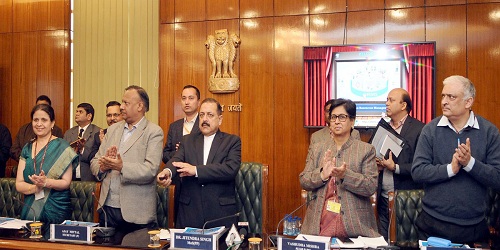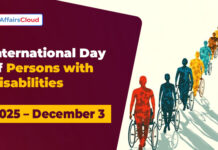On December 25, 2017, Union Minister of State for PMO, Personnel, Public Grievances & Pensions launched electronic-Human Resource Management System (e-HRMS).
About e-HRMS:
e-HRMS is a software that provides a comprehensive and combined view of the human resource deployed by the Government.

- It will serve as a single platform for Government employees to access their service book, leave details, information related to their Provident Fund contribution, Salary break up etc. Besides through e-HRMS, they can also apply for different kind of claims/reimbursements, leave, leave encashment, loan/advances, Leave Travel Allowance (LTC) advances, etc.
- e-service book, launched for Department of Personnel and Training (DOPT) employees in March 2017 will also be integrated into the e-HRMS. E-service book is an initiative taken to fully automate live updating of all records.
- e-HRMS software also has HR analytics which will help Government to post right person at right post.
- Jitendra Singh launched e-HRMS during the observance of Good Governance Day by the Ministry of Personnel, Public Grievances and Pensions. Since 2014, Good Governance Dayis being observed by the Indian Government every year on 25th December, to mark the birth anniversary of former Prime Minister, Atal Bihari Vajpayee.
Modules of e-HRMS:
Dr. Singh launched the website, ehrms.gov.in and following five modules covering 25 applications.
- Personnel Information System: For self-updating information by employees.
- Leave: For claiming and attaining sanction of
- LTC: For checking eligibility for LTC, attaining sanction, advance claim and final reimbursements.
- Loan/Advances: For availing loan and advances.
- Tour: For submitting tour applications and claiming travel allowances.
Government employees will be provided training on these modules. Above stated five modules will be fully functional by January 2018, while remaining modules will be developed by end of April 2018.
AffairsCloud Recommends Oliveboard Mock Test
AffairsCloud Ebook - Support Us to Grow
Govt Jobs by Category
Bank Jobs Notification




